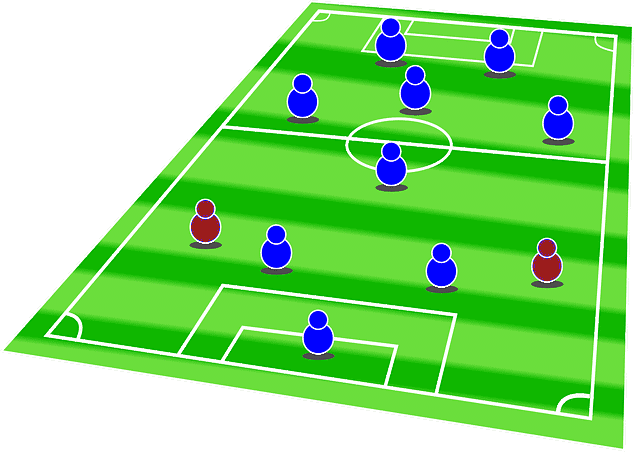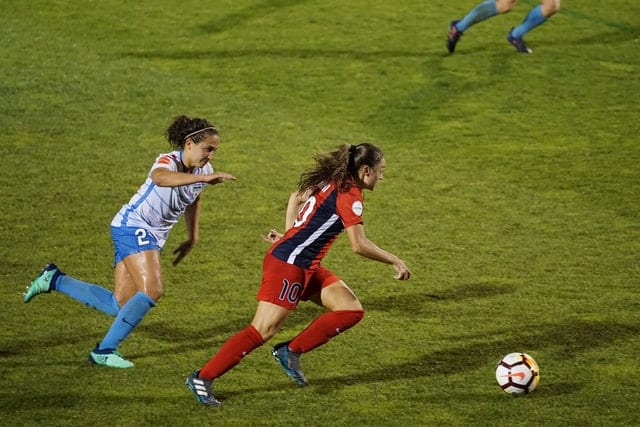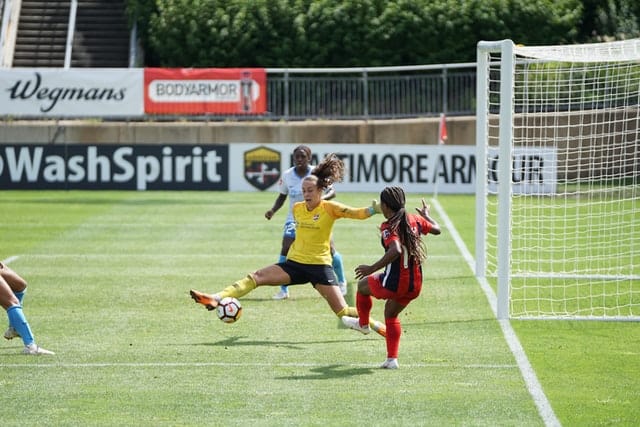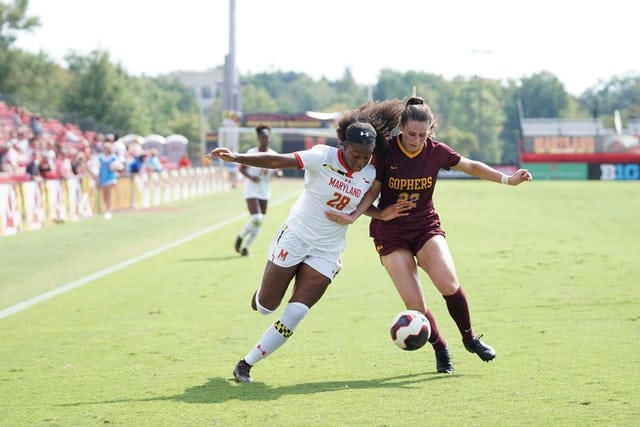Each soccer team has 11 players on the field, and each one of these players have their own position and their own roles. One of these positions and roles is the fullback position.
But what is a fullback in soccer?
A fullback in soccer is a defensive player that is usually positioned near the sides of the field. Fullbacks take several roles on the field. They defend when their team does not have the ball, and they join their attack when they do have the ball.
I have been playing and watching soccer for years, and to me, I have always viewed the fullback position as one of the most interesting soccer positions.
The reason behind this is that to be able to play as a fullback, you should have a very large set of skills that span across offense and defense. We’ll dive deeper into the role of a fullback in a minute, but first, I want to answer a quick question.
How many fullbacks are there on a soccer team?
The soccer formation used by the coach determines how many fullbacks will be playing on the team. A 4-3-3 formation generally means that there are 2 fullbacks on the team while a 3-5-2 formation generally means that there are no fullbacks on the team.
Even though it is usually up to the coach to decide the number of fullbacks on the team based on the formation that they want to use, most of the time, there are either 2 fullbacks on the team, or none.
Here are the fullbacks’ positions in a 4-3-3 formation (marked in red):

As for the 3-5-2 formation, all of the defenders will usually be central defenders and none of them will be a fullback.
You may ask, can a soccer team have a single fullback instead of either 2 or none? Well, they can, but it won’t make sense at all so almost no team does this.
If you want to use fullbacks, it makes sense to have one one each side of the field instead of only having a single fullback on one of the sides.
A team might have a single fullback for a short period of time during a match, but that happens when one of the 2 fullbacks on the field gets a red card (i.e., they get kicked out of the game for making a serious foul or for getting 2 yellow cards)
But even during this event, the coach will most probably change the team’s plan either by substituting the remaining fullback, or by making them change their role on the field till the end of the game.
if you want to learn more about all the defense soccer positions in general, then you can check this detailed article about the subject.
Enough about the fullback’s position on the field and more about what the fullbacks actually do during a soccer game. Here you go.
What are the responsibilities of a soccer fullback?
As I have mentioned before, fullbacks have some extra responsibility than the other defenders on the team.
As a fullback, you should take part in the defense when your opponent wins the ball, and you should also help your team’s attack when your team wins the ball.
Sometimes, fullbacks play as “wing backs”, which means that they play as fullbacks when defending, and they play as wingers when attacking.
If you do not already know, a winger in soccer is a player who runs on the sides of the field close to the opponent’s goal.
This makes the fullback position very physically demanding. According to this study, the fullback position is more physically demanding than the other defensive positions.
After all, A fullback might have to run the whole field back and forth throughout the whole game. You can only imagine how physically demanding this is for the players.
But let’s dive into a little bit more details on what the fullbacks do in terms of defense and offense.
What are the defensive roles of a soccer fullback player?
Fullback players are expected to cover the side areas of the field. Ie, they are expected to keep the wingers of the opponent team in check.
If a winger from Team A tries to penetrate Team B’s defense by running on one of the sides of the field towards team B’s net, then it is usually the responsibility of Team B’s fullback to try and stop the winger from approaching any further.

Fullbacks are also expected to not allow the wingers to cross the ball from the side of the field to the penalty box, or else the opponent might get a good position to score.
Sometimes if the fullback absolutely can’t prevent the cross because they got outnumbered or outclassed, they try their best to delay the opponent until the defense regroups and closes the gaps in their area.
For the fullback to be able to do all this, they need to have some excellent agility skills, and they need to be great in 1 vs 1 encounters because if they slip at any moment, they might give their opponent an excellent opportunity to score.
But things do not stop here. A fullback sometimes also joins the central defenders to help them when they get outnumbered and outclassed.
If there is no threat on the side that the fullback defender is covering, then they usually head towards the penalty area to help the central defenders block any upcoming goal attempts by the opponent.
What are the offensive roles of a soccer fullback player?
Once the fullback’s team wins the ball, the first thing that the fullbacks do is that they head towards the opponent’s side of the field to try and help the midfielders and the forwards/strikers penetrate the opponent’s defense.
If the fullbacks are expected to work as wingers by their coaches, then the fullbacks will try to cross the ball to their teammates whenever they can.
Fullbacks will try to take the ball from their defense/midfield teammates, and run with it on the side of the field till they get close to the opponent’s team.
Once they get close, they will usually attempt to cross the ball to the box area of the opponent by kicking it there.
If the ball reaches one of the fullback’s teammates after they cross the ball, then the teammate might get a very good opportunity to score with either a header or a normal kick.
Sometimes the fullbacks do not even cross the ball when they become close to the goal line of the opponent. What they do instead is run directly towards the goal and try to score themselves or make a short pass to one of the strikers to score.

If you are interested, you can check this article that discusses some ways to help wingers score more goals during a soccer game.
But what if the fullbacks get blocked by their opponent’s fullbacks? Well, they simply either try to win a 1v1 encounter with them, or they just pause their run and pass the ball back to their midfielders or their defenders and try again later on.
Fullbacks can also offload some of the pressure that their midfielders encounter in the middle of the field.
For example, if the midfielders are finding it very difficult to keep the ball with them in the middle of the field and to pass it around, they can usually pass the ball to the fullbacks (or just back to the defenders in general).
The fullback will then automatically draw some of the opponent players to the side of the field that they are on and thus reduce the opponent’s concentration in the middle of the field.
So in simple words, a fullback has a lot of rules to play offensively and defensively.
Conclusion
A fullback in soccer is one of the most critical positions. A soccer team with good fullbacks can rest assured that it will always get great chances to score, and that its defense will be hard to penetrate from the sides of the field.

